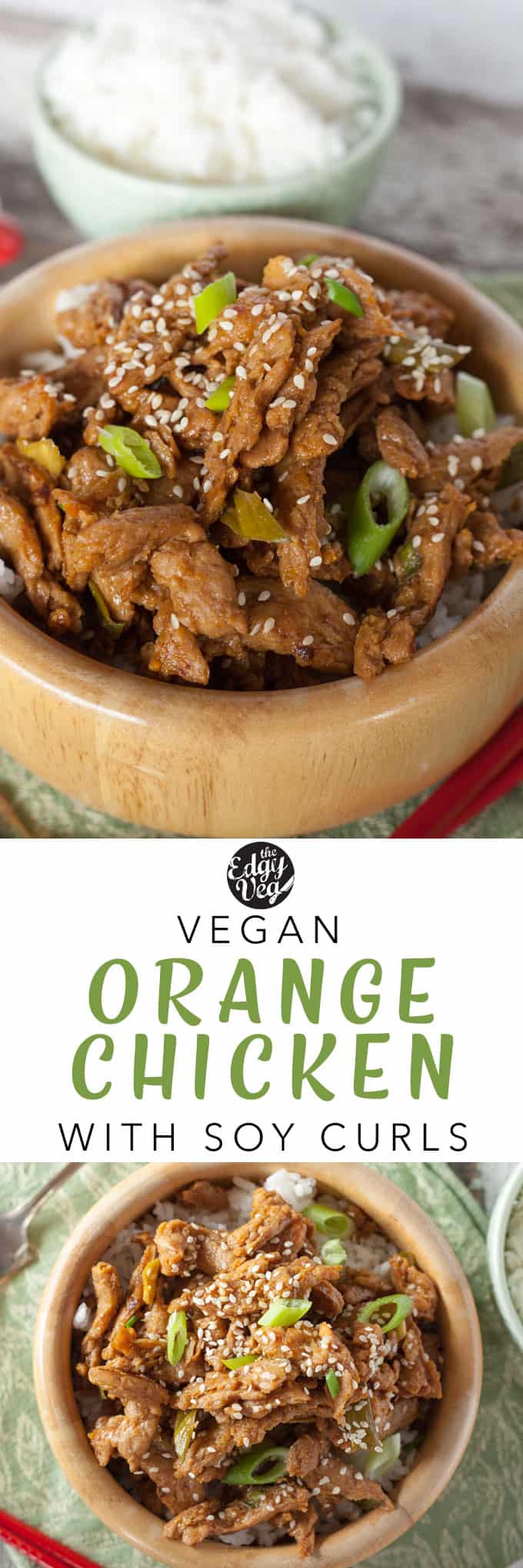

It also may contain salmonella, clostridium perfringens, and other bacteria,” according to the USDA. “Most raw poultry contains campylobacter. However, chicken is one of the most common sources of food poisoning. The animal is often touted as a health food, scarfed down by bodybuilders and yoyo-dieters alike. Unlike red and processed meats, chicken has not (yet) been identified as a possible carcinogen. Nutrient facts aside, let’s dive into the health effects of animal-based protein. By the numbers, vegan orange chicken is demonstrably healthier than animal-based orange chicken. Yes, the sugar content is still high, but this vegan version is significantly lower in calories, fat, sodium, and cholesterol. A 5-ounce serving of Gardein’s Vegan Frozen Mandarin Orange Crispy Chick’n made with a combination of soy protein and seitan (wheat-based protein) contains 260 calories, 7 grams of total fat (0.5 grams saturated fat), 0 grams of cholesterol, 590 milligrams of sodium, 36 grams of carbohydrates, 19 grams of sugar, 1 gram of fiber, and 13 grams of protein. To compare, here’s a snapshot of vegan orange chicken nutrition.

Like fat, excess cholesterol can increase one’s risk for heart disease by clinging to artery walls and thus inhibiting or completely blocking blood flow. In regards to cholesterol, because the human body can make its own, we don’t need to ingest this waxy substance. Orange chicken is a high-calorie and high-fat food, and while both are necessary for bodily functions, excess calories and fat can trigger chronic inflammation-the precursor to serious diseases such as cardiovascular conditions, diabetes, and even cancer. Just looking at the hard numbers on the nutrition label, the total amount of calories, fat, cholesterol, sugar, and sodium are the most concerning in regards to health. Keep in mind, Panda Express offers small, medium, and large sizes for entrées, and this 5.7-ounce amount does not even fill the small carton-which carries eight ounces. According to the Panda Express nutrition spreadsheet, a 5.7-ounce serving of (animal-based) orange chicken clocks in at 490 calories, 23 grams of total fat (5 grams of saturated fat), 80 milligrams of cholesterol, 820 grams of sodium, 51 grams of carbohydrates, 2 grams of fiber, 19 grams of sugar, and 25 grams of protein. Setting the debate over if chicken is healthy or not aside (for now), most will agree that battered and fried anything completely covered in a sugary sauce is not the best option if you want to feel your best. Orange chicken nutrition: vegan vs chicken Like many meat-centered dishes, it’s all about the sauce, and getting it just right is what makes orange chicken so comforting, craveable, and iconic. The main ingredients in this store-bought option include sugar, water, vinegar, soy sauce, spices, cornstarch, caramel color, and natural flavors. While the chain keeps its sauce ingredients top secret, it also sells a very similar Orange Sauce, available at Target and other big-box retailers. It was invented in 1987 by Chef Andy Kao exclusively for Panda Express. Orange chicken is a Chinese-American invention made with two-bite-sized pieces of boneless, skinless dark meat chicken that is battered, fried, and “wok-tossed” in a thick and sticky, sweet-and-spicy orange sauce.
#Vegan orange chicken how to
Here’s everything you need to know about vegan orange chicken, from where to buy it to how to make it at home. Vegan orange chicken is firmly “a thing.” While no longer available, you can still get your fix. Plant-based versions have been replicated in vegan restaurants and across the blogosphere, but the Panda Express’ limited-time offering Beyond the Original Orange Chicken made it official. Does orange chicken actually contain oranges, or does the name purely come from the hue of these sticky-sweet glazed and fried chicken morsels? Regardless of its origins, the dish has become synonymous with fast-casual Chinese-American restaurants, and vegans want in.


 0 kommentar(er)
0 kommentar(er)
